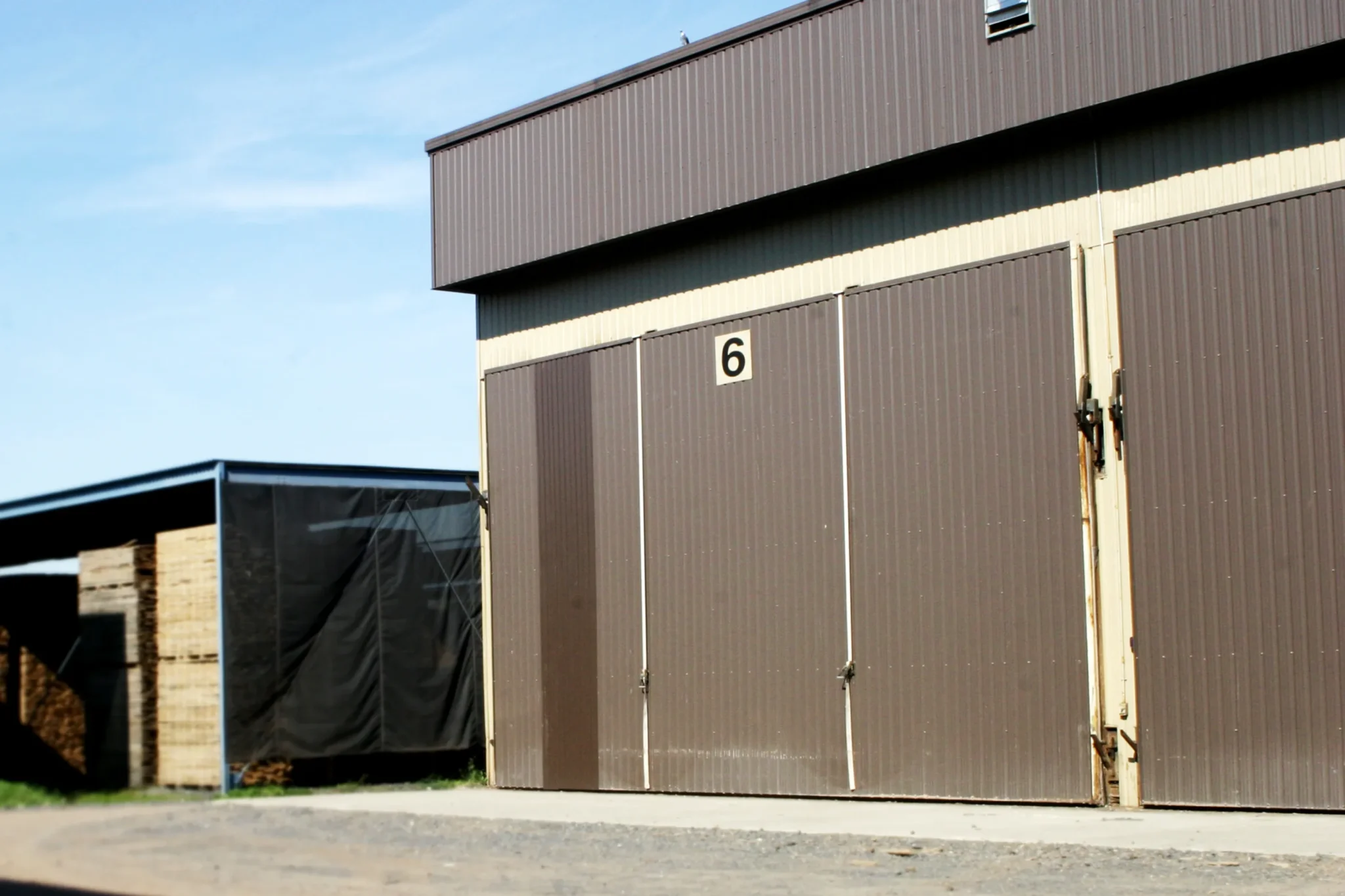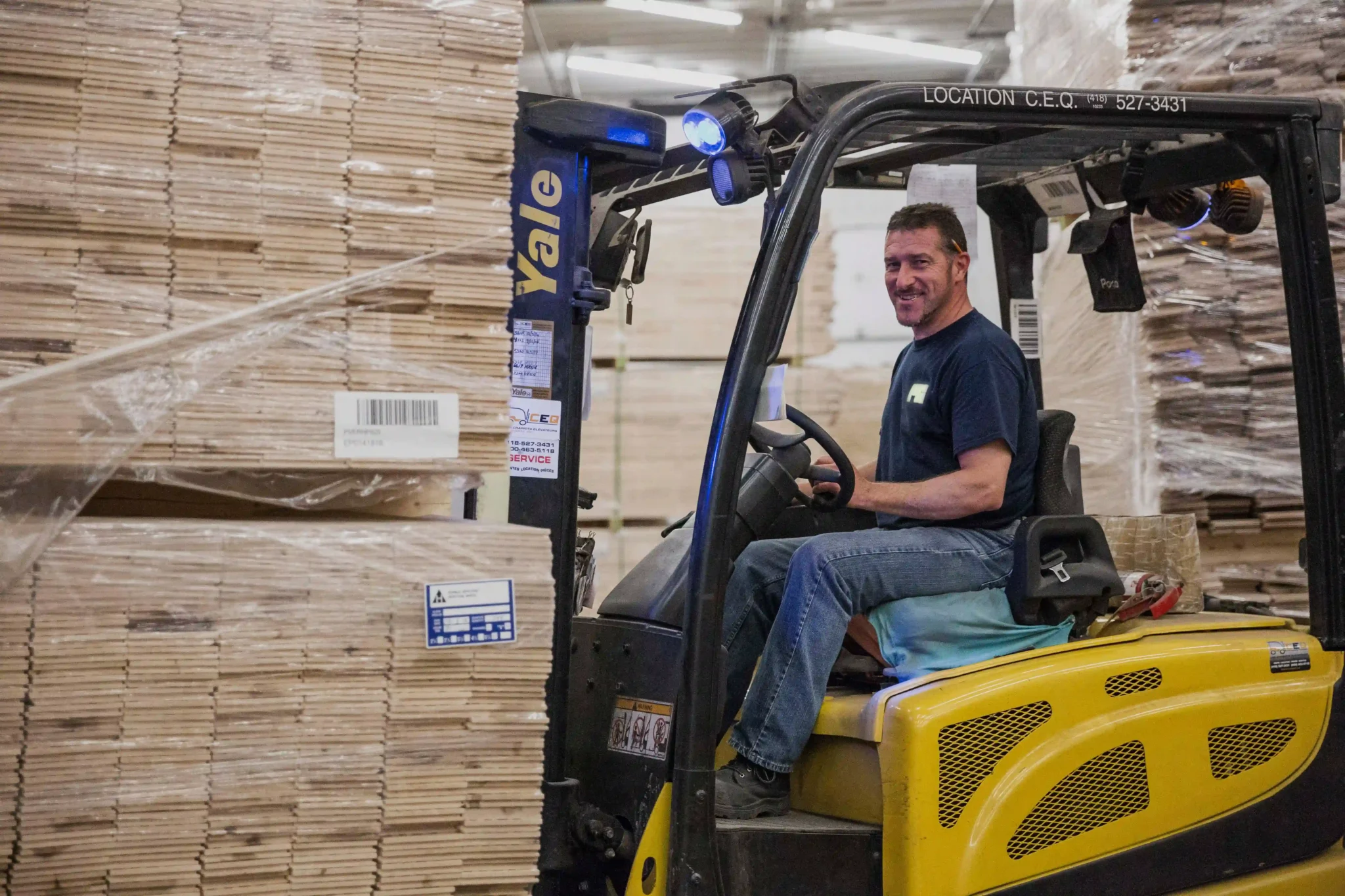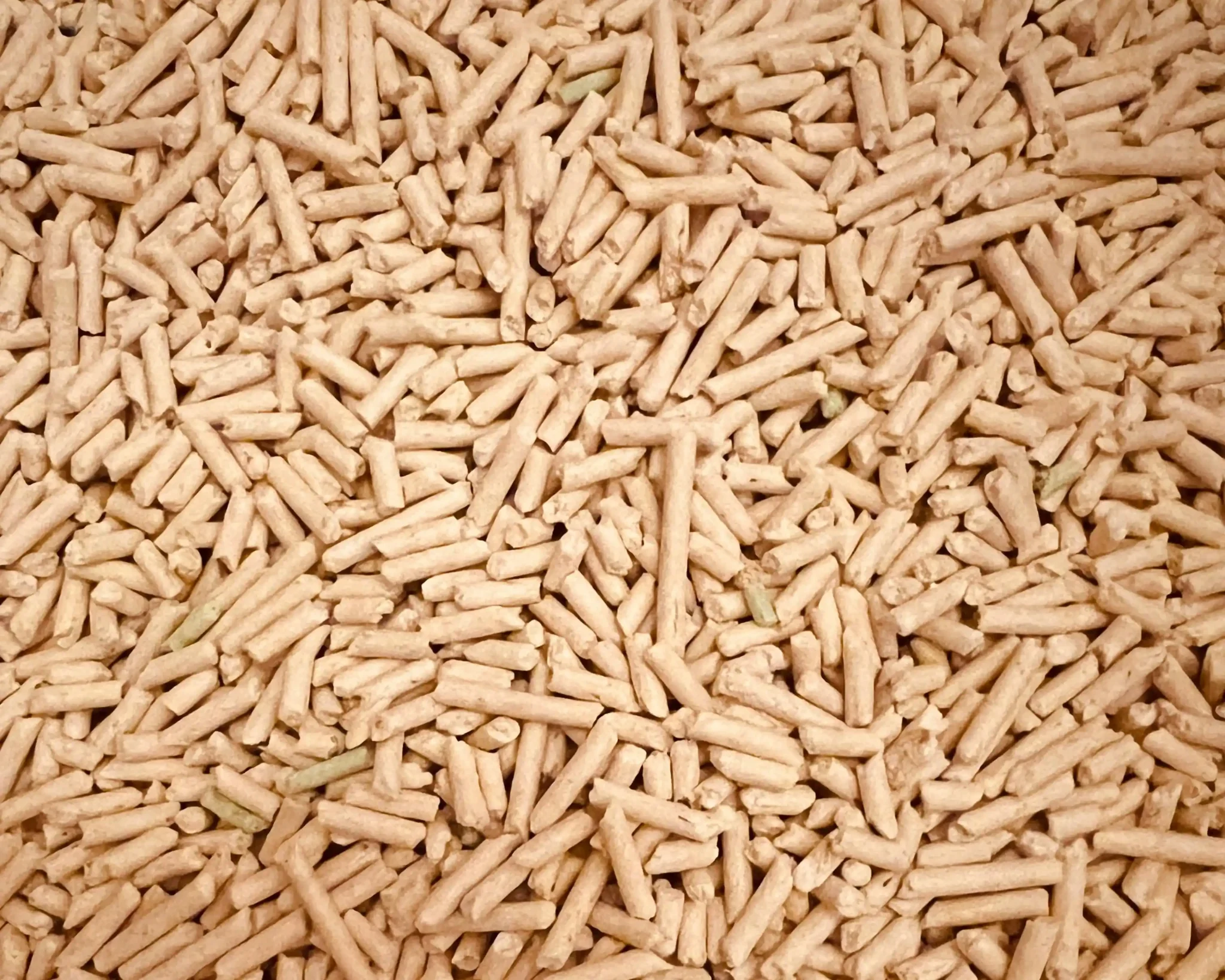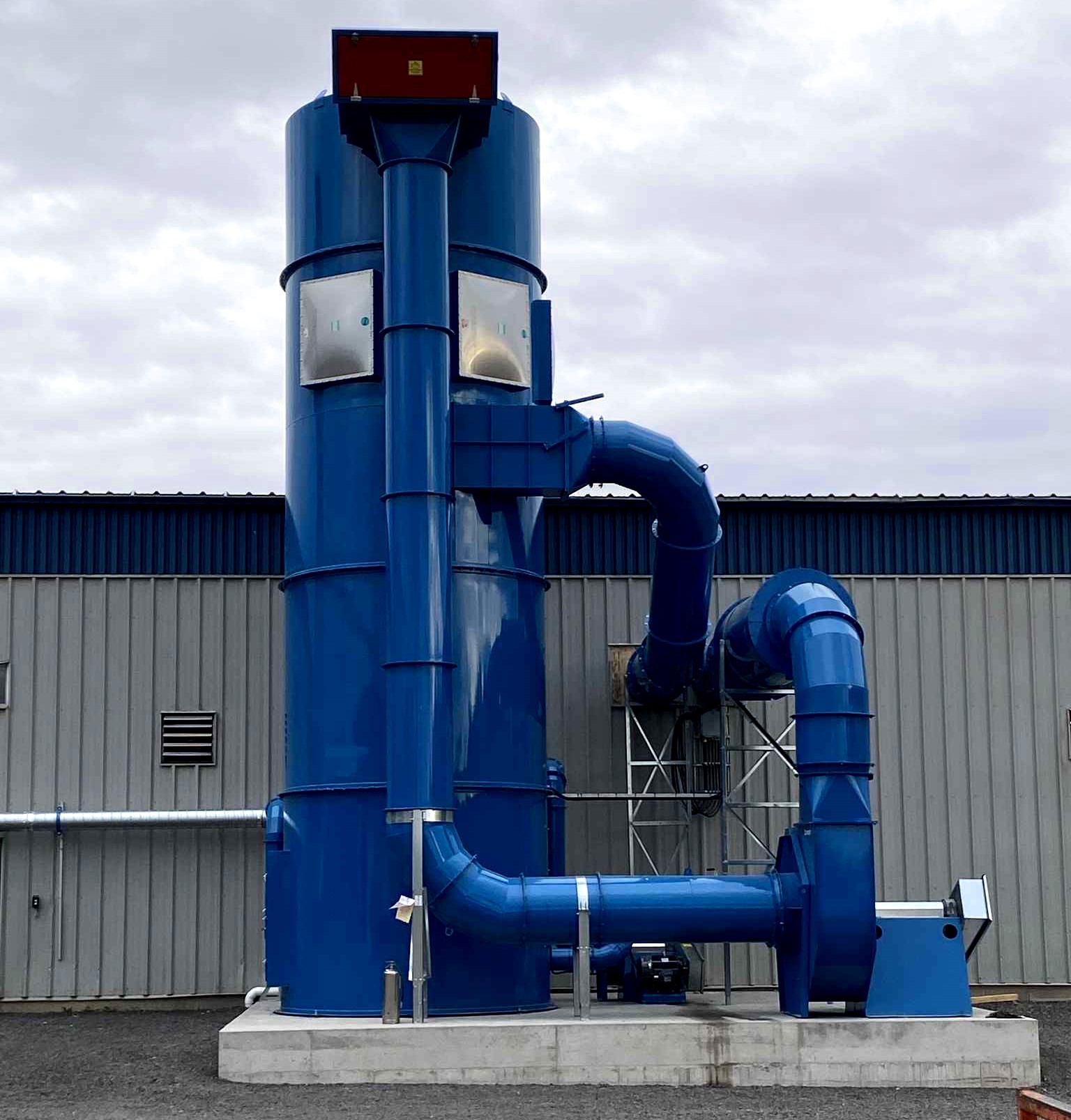MANUFACTURING: CASE STUDY
PG Flooring: A green revolution in wood manufacturing
A model of industrial ecology, innovation and decarbonization
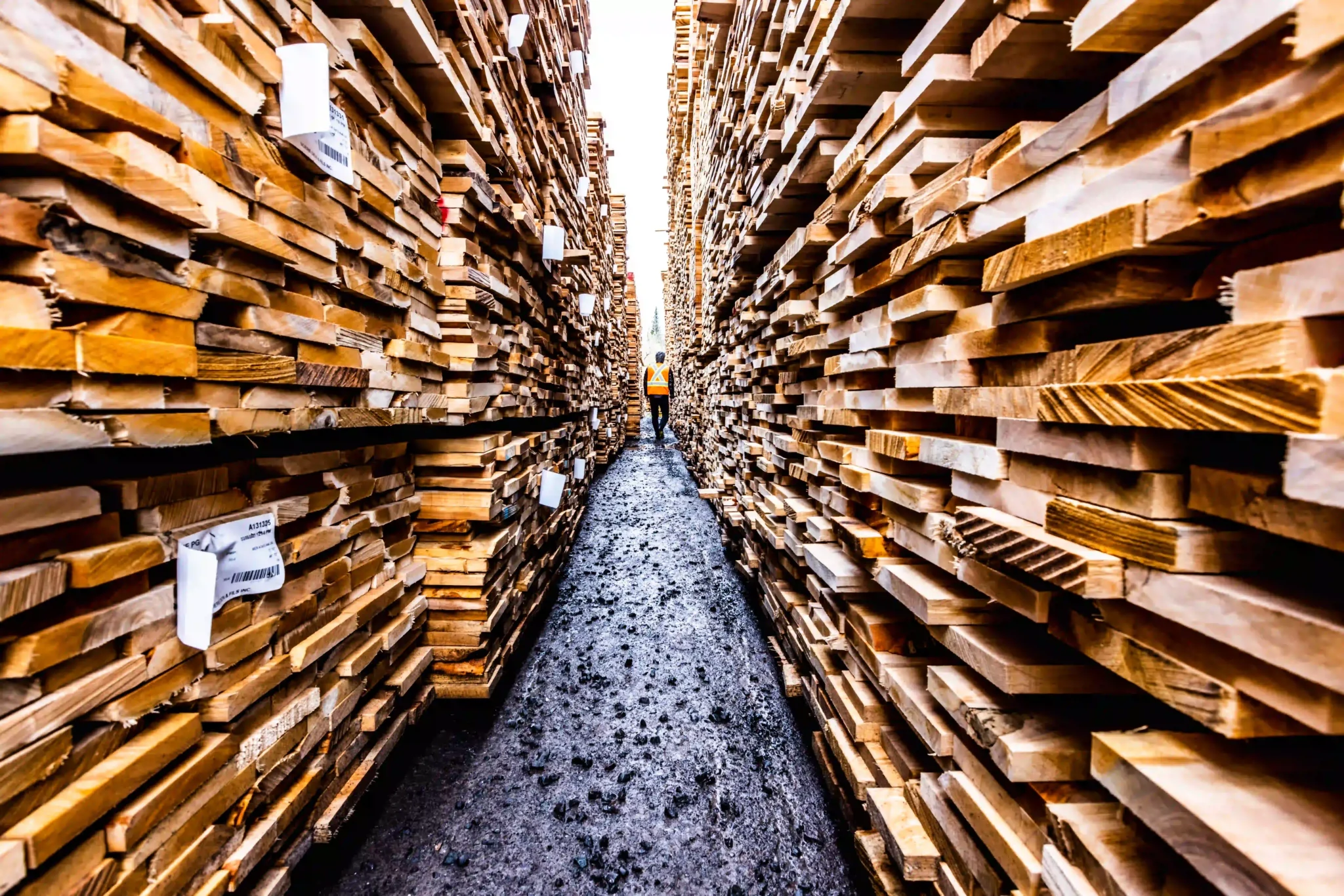
PG Flooring is a world-class manufacturer of hardwood floors internationally distributed and conscientiously manufactured with style and care. PG Flooring offers more than 5 000 distinctive products.
Sustainable Community member information

- Name: PG Flooring
- Sector: Manufacturing industry
- Sub-sector : Wood processing
- Organization type : Company (SME)
- Location: Saint-Édouard-de-Lotbinière, QC, Canada
PG Flooring Climate Challenge
As a company that works with natural materials, it was obvious to us that any action enabling us to contribute to a healthier and better environment should be put forward. That’s why every project is designed with this in mind. This means optimizing materials, reusing waste, using our biomass to heat our plants, and so on. What’s more, a few years ago we replaced our propane-powered forklift trucks with electric ones.
How Will Solutions meets PG Flooring's environmental needs and challenges
We chose to work with Will Solutions because of their unrivalled expertise and their ability to save us valuable time.
Their Sustainable Community provides us with in-depth market knowledge and facilitates the management of our carbon credit portfolio. Right from the start of the project, they were at our side to collect the information we needed to open the file. Subsequently, the collection of annual data and the calculation of emission reductions are very simple thanks to their support.
Will Solutions handles the sale of the carbon credits collected, provides us with accurate data and ensures regular monitoring.
Each year, we receive a payment from the sale of carbon credits generated by our in-house ecological projects. All these gains are then reinvested in new ecological projects, such as the installation of charging stations for electric cars.
What’s more, Will Solutions has a portfolio of potential buyers of carbon credits that would be difficult for us to reach on our own, given that we’re not in the business. Their knowledge and expertise are undeniably a great help to us.
Your commitment to decarbonization
Production of carbon credits
Would you like to finance your GHG reduction projects? Register to the Sustainable Community, generate free carbon credits and boost your long-term decarbonization strategy!
Purchase of carbon credits
Do you appreciate sustainable community projects like those carried out by Planchers PG? Buy verified carbon credits today to support WILL and achieve carbon neutrality or net zero!
Actions implemented to decarbonize PG Flooring
2017
Joining the Sustainable Community
11
listed buildings and infrastructures
4
types of GHG reduction projects developed
8
years of involvement
2017
Joining the Sustainable Community
11
listed buildings and infrastructures
4
types of GHG reduction projects developed
8
years of involvement
As part of its eco-responsible approach, PG Flooring implements concrete ecological projects to minimize the environmental impact of its activities. From emissions reduction to sustainable materials management, the company proves that performance and sustainability go hand in hand.
#1 Use of biomass to heat their building and 9 dryers instead of natural gas/propane (since 2012)
Initiated in 2012, the first project involves using biomass in the plant’s wood dryers. Unlike its many competitors in the wood products manufacturing sector, who use natural gas in their equipment, PG Flooring recovers its own production residues to generate energy. As a result, PG Flooring reduces the emissions associated with wood drying by 60 to 96%.
One of the company’s wood dryers.
One of the electric forklifts used in the PG Flooring warehouse, replacing the old propane-powered forklifts.
#2 Converting forklifts from propane to electricity (since 2015)
In 2015, PG Flooring took the initiative to replace all propane-powered forklifts with electric forklifts.
In addition to reducing nearly 100% of the GHG emissions associated with forklift use, this solution includes numerous benefits, such as the elimination of harmful exhaust gases and improved air quality, noise reduction as well as vibration reduction, all of which contribute to better comfort and working conditions for operators.
#3 Diverting biomass residues from landfill
PG Flooring’s third project is to recycle the wood residues from its production. Indeed, at PG Flooring, all wood residues generated find a second use: some are used to fuel the wood dryers, others are sold to growers or to industries, for example, for the manufacture of pellets or laminated panels. By reusing wood residues, PG Flooring avoids landfill sites and decomposition, which would emit GHGs.
Eco-designed wood pellets made from biomass residues.
(source : image bank)
One of the company’s dust collectors, which recovers heat to heat its plants.
#4 Heat recovery from dust collector (since 2016)
During the last 8 years, PG Flooring acquired three pieces of equipment (dust collectors) from which they recover heat. When the heat emitted by a piece of equipment is recovered, the energy required to heat the building is reduced.
At PG Flooring, heat recovery from dust collectors avoids the consumption of a combo of electricity, natural gas or fuel oil. As a result, the GHG emissions associated with these energies are reduced. At PG Flooring, more than 6 tonnes of GHGs are reduced every year!
“Will Solutions handles the sale of the carbon credits harvested, provides us with accurate data and ensures regular monitoring. Each year, we receive a payment of the earnings from the sale of carbon credits generated by our in-house ecological projects.”
PG Flooring testimonial: Melissa Desrochers on the Sustainable Community
« What we like about Will’s Sustainable Community is the ease of access. […]. They took the time to explain to me how it worked. The Will Solutions team is quick to respond and open when discussing our new GHG reduction projects. It’s a team effort to implement new projects. We’ll be delighted if we can encourage people to take action in the Sustainable Community. »
My corporate carbon pledge
Decarbonization strategy results
Quantitative results
tonnes of Co2e reduced (since 2010)
tonnes of Co2e reduced annually (2018 figures)
CAD paid in one year (2023 figures)
Qualitative results
Offering eco-responsible products
Attentive to the eco-responsible needs of its customers, the company offers hardwood flooring that combines quality and respect for the environment. The company is committed to offering sustainable products, in harmony with the values of its customers, to guarantee them an experience without compromising on peace of mind and well-being!
Realize your direct emissions reduction potential
By reducing emissions throughout its value chain, PG Flooring is fully realizing its potential to reduce direct emissions, a best practice in decarbonization. Its efforts at source are essential to building a low-carbon, sustainable Canada!
Demonstrate a concrete environmental commitment
Joining the Sustainable Community enables SMEs to demonstrate their environmental commitment in concrete terms. By accurately calculating emissions reductions, quantifying carbon data and transparently disclosing climate results, it can integrate these efforts into its ESG reports, thereby reinforcing its credibility with partners and customers.
Other results
We agreed to invest our carbon revenues in internal green projects. The very first project was to install charging stations for electric cars. Next, we had our carbon footprint calculated to give us a detailed picture of our emissions. This will enable us to further improve our performance and continue to reduce our footprint.
Future projects and sustainability prospects for PG Flooring
Going forward, we intend to continue working with Will Solutions to manage our carbon credits, and to continue thinking about our projects in a green way, i.e. always with an eye to improving our situation. We have an action plan for reducing our carbon footprint, and we intend to stick to it.
The Eye of WILL: Decarbonization recommendations for the manufacturing sector
For manufacturing companies looking to reduce their carbon footprint and improve their environmental performance, here’s some high-level strategic advice that can help you move forward on your decarbonization journey.
Decarbonization tactics for the manufacturing industry
1. Measuring your carbon footprint:
The first crucial step is to accurately measure the carbon footprint of your activities. Identify the sources of direct emissions (scope 1) and indirect emissions (scope 2 and 3) to target carbon-intensive items. A good practice is to carry out this measurement at least every 5 years, in order to update the reference year, establish a recent inventory and monitor the evolution of the company’s overall emissions. This makes it possible to adjust actions and demonstrate results. Will Solutions can help you measure your emissions.
2. Energy efficiency in industrial processes:
Adopting more efficient technologies, such as high-efficiency motors, energy management systems or heat recovery, reduces emissions while optimizing energy consumption and costs. Process automation and digitalization can also limit energy losses, helping to improve operational efficiency.
3. Renewable energies and reduced dependence on fossil fuels:
Gradually switch to renewable energies (solar, wind, biomass) by installing on-site solar panels or purchasing green energy via long-term contracts (Power Purchase Agreements). The electrification of industrial processes enables fossil-fuel-powered equipment to be replaced by cleaner electrical machines, which is particularly advantageous for manufacturing activities requiring heat and steam.
4. Optimizing supply chains and logistics:
Collaborate with responsible suppliers who share your decarbonization goals by choosing low-carbon materials and favoring short circuits to limit transport-related emissions. Streamline your logistics operations by using electric, hybrid or alternative fuel vehicles, and optimizing routes to reduce kilometers traveled and empty runs.
5. Fleet electrification:
Where possible, replace forklifts, collection vehicles and other motorized equipment with electric or hybrid vehicles, thereby reducing CO2 emissions. In addition, decarbonization of transport will also soon be available to carbon finance.
6. Circular economy and resource management:
Incorporate circular economy practices by reusing materials, recovering by-products and reducing waste. This reduces carbon footprints while improving operational efficiency. When designing products, adopt eco-design principles to extend their lifespan or facilitate their reuse and recycling.
7. Innovation in low-carbon materials:
Explore the use of alternative low-carbon materials, such as eco-friendly composites, recycled aluminum or low-emission steel. Research and development into more sustainable and less polluting materials not only helps reduce the carbon footprint of your products, but also enables you to differentiate yourself on the market by offering innovative solutions.
8. Optimizing production processes:
Analyze your production processes to identify opportunities for reducing emissions. Optimizing production flows, reducing cycle times, and minimizing interruptions can improve energy efficiency and limit material losses. By implementing predictive maintenance, you can also reduce energy consumption and improve equipment longevity.
9. Investments in CO₂ capture and recovery :
If your industrial processes generate significant CO₂ emissions, consider carbon capture and recovery (CCR) technologies to capture and reuse this CO₂ in other processes. This may include transforming the captured CO₂ into chemicals or materials, or storing it safely underground to prevent its release into the atmosphere.
Sustainability excellence for manufacturers
10. Monitoring and reporting:
Set up a regular monitoring system for greenhouse gas emissions and produce transparent reports to measure progress in reducing the carbon footprint. In fact, this is part of our Sustainable Community service.
11. Collaboration:
Collaborate with other stakeholders, including local authorities, businesses and communities, to develop innovative decarbonization solutions and share best practices.
12. Regulations and incentives:
Stay informed about government regulations related to decarbonization and explore financial incentives to support your emissions reduction efforts such as the Will Solutions Sustainable Community.
13. Research and development:
Invest in research and development to discover new, more environmentally friendly technologies and waste management methods.
14. Training and awareness:
Train staff in decarbonization best practices and raise awareness of the importance of reducing the center’s carbon footprint.
Ultimately, by implementing these key tips, your waste management center can make a significant contribution to decarbonization while promoting a cleaner, more sustainable environment.





